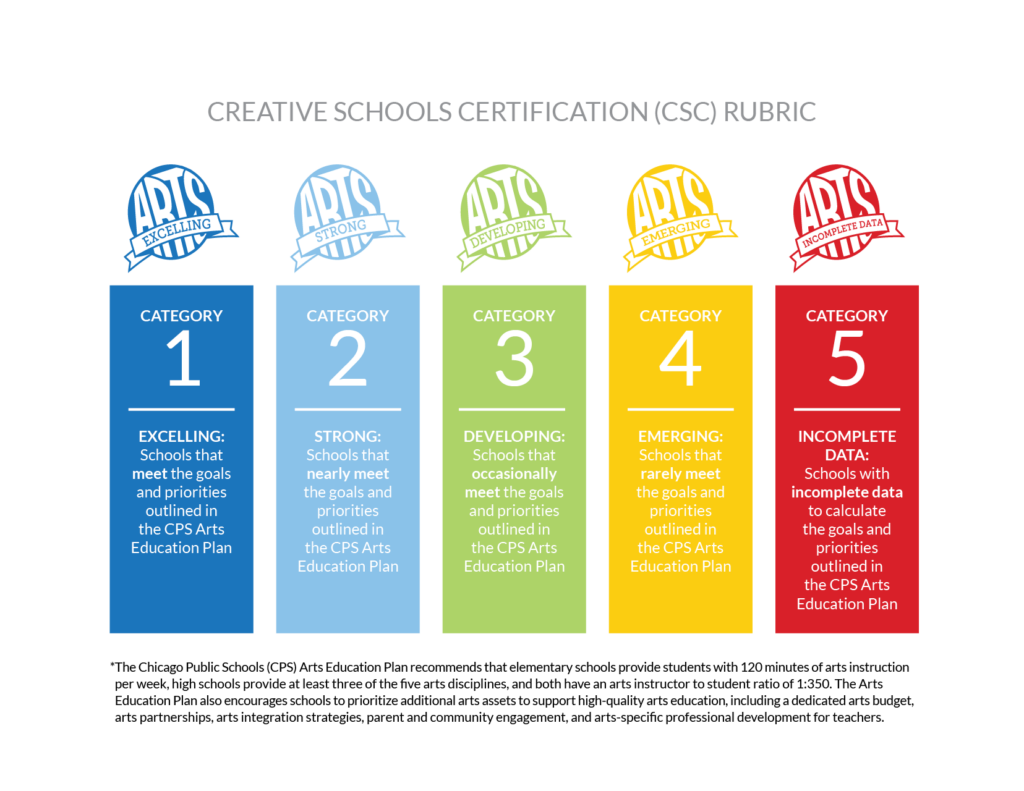Over the last two years, Ingenuity and CPS have worked together to advance the thinking behind the CSC. The result of this work, CSC 2.0, remains a summary score measuring school progress toward the goal of providing access to quality arts programming as part of a well-rounded education. Most of what you’re familiar with is still critical to the scoring rubric.
What previously made up “Phase 1” of the scoring rubric are now referred to as measures of “Access.” These will look familiar. The Access measures capture student access to the arts through arts instructor staffing levels, minutes of instruction and the share of students who have access to the arts (among elementary schools), and the number of disciplines and depth of instruction offered in those disciplines (among high schools).
The elements that previously made up “Phase 2” of the scoring rubric, as well as several additions, are now part of the “Quality” section of CSC 2.0. These include indicators of schools partnering with outside arts organizations, providing opportunities for parent and community engagement with the arts, school participation in professional learning in the arts, and school budgeting for the arts. There are also new opportunities for schools to make non resource-dependent improvements to their school arts programs (e.g., by including arts in their school governance) and to get credit toward their final CSC score for doing so.
Importantly, these and other advancements in data collection and our scoring rubric are the next steps forward for a more equitable scoring system; schools now have the ability to improve their scores by making arts-positive changes beyond basic resources.
A detailed description of all changes from the original CSC to CSC 2.0 can be found here.
A detailed description of CSC 2.0 can be found here.
